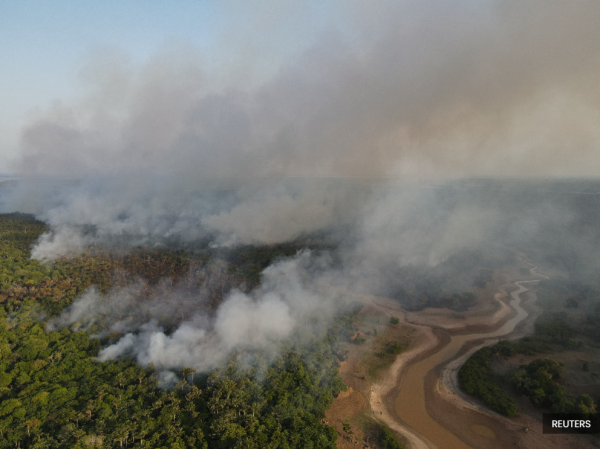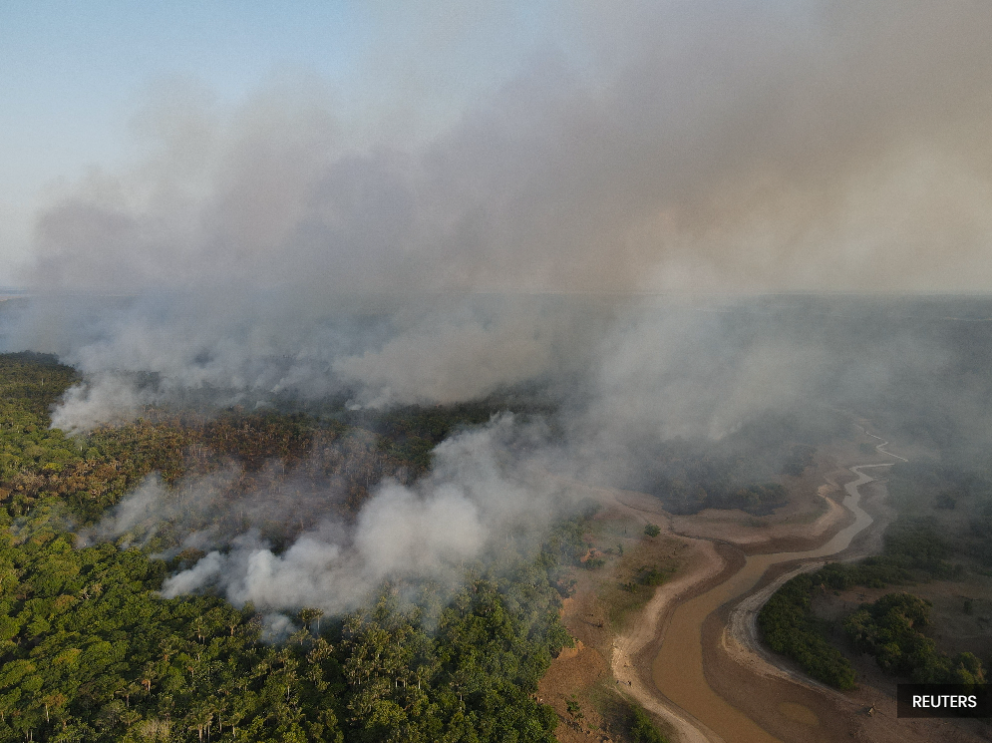BELEM, Nov 9 — With the pace of climate change speeding up, extreme weather and other impacts are taking an increasing toll on populations and environments across the globe. Here are some of the developments this year in climate science:
Warmer, faster
Global temperatures are not just climbing; they are now rising faster than before, with new records set in 2023 and 2024, and at points in 2025. That finding was part of a key study in June that updated baseline data used in the Intergovernmental Panel on Climate Change's science reports, issued every few years.
The new research shows the average global temperature rising at a rate of 0.27°C each decade — or almost 50 per cent faster than in the 1990s and 2000s when the warming rate was around 0.2°C per decade.
Sea levels are rising faster now, too — at about 4.5mm per year over the last decade, compared with 1.85mm per year measured across the decades since 1900.
The world is now on track to cross the 1.5°C warming threshold around 2030, after which scientists warn we will likely trigger catastrophic, irreversible impacts. The world has already warmed by 1.3°C to 1.4°C since the pre-industrial era, according to the World Meteorological Organisation.
Tipping points
Warm-water corals are in an almost irreversible die-off from successive marine heatwaves — marking what would be the first so-called climate tipping point, when an environmental system begins to shift into a different state.
Researchers in October also warned that the Amazon rainforest could begin to die back and transform into a different ecosystem, such as a savannah, if rapid deforestation continues as global warming exceeds 1.5°C, earlier than previously estimated.
They said meltwater from the thawing ice sheet atop Greenland could hasten the collapse of the Atlantic Meridional Overturning Circulation (AMOC), which keeps winters mild in Europe.
In Antarctica, where ice sheets are also under threat, scientists are worried about declining sea ice surrounding the southernmost continent. Similar to what is happening in the Arctic, ice loss exposes dark water that can absorb more solar radiation, which amplifies the overall warming trend.
It also jeopardises the growth of phytoplankton that consume much of the world's carbon dioxide (CO2).
Land on fire
Along with heatwaves and drought, wildfires still threaten to be frequent and severe.
This year’s State of Wildfires report, led by a group of weather agencies and universities, counted some 3.7 million square kilometres as having burned between March 2024 and February 2025 — an area about the size of India and Norway combined.
That was slightly below the annual average burned over the last two decades. But the fires produced higher CO2 emissions than before, as more carbon-dense forests burned.
Deadly heat
Researchers are working on ways to assess heat-related health risks and tolls, as United Nations health and weather agencies estimate that about half the world's population is already struggling.
The agencies also estimate worker productivity dropping two to three per cent for every degree above 20°C, while another study in the Lancet journal in October estimates global losses of more than US$1 trillion (RM4.18 trillion) from that lost productivity for last year alone.
There is no consistent international definition of a heat-related death, but technological advances are helping scientists bridge data gaps and compare conditions across places.
For example, in Europe, one team at the United Kingdom's (UK) Imperial College used mortality trends to estimate more than 24,400 deaths this summer related to heat exposure across about 30 per cent of the European population. They attributed up to 70 per cent of those deaths to climate-fueled heat, based on the same mortality trends applied to a model of Europe without global warming.
For last year's record-hot European summer, another team used computer modelling to examine mortality statistics along with temperature data and health parameters, estimating more than 62,700 heat-related deaths across 32 countries, or about 70 per cent of the continent's population.
Science under attack
The United States (US) administration under climate-denying President Donald Trump is hoping to slash funding for agencies that collect and monitor climate and weather data, raising concerns among a scientific community that says US leadership will be hard to replace.
Trump's 2026 budget request, yet to be approved by Congress, proposes halving Nasa Earth Science's annual budget to about US$1 billion (RM4.18 billion) and cutting NOAA's spending by more than a quarter to US$4.5 billion (RM18.79 billion), while eliminating its climate research arm, among other cuts.
However, elsewhere, public science spending is increasing, with record budgets for science research in China, the UK, Japan, and the European Union (EU). Last month, the EU opened its real-time weather data monitoring to public access.




